In this Biomolecules Class 12 guide, we will explore the key biomolecules—carbohydrates, proteins, lipids, and nucleic acids—along with their structure, types, and functions
Biomolecules Class 12 – The Foundation of Life
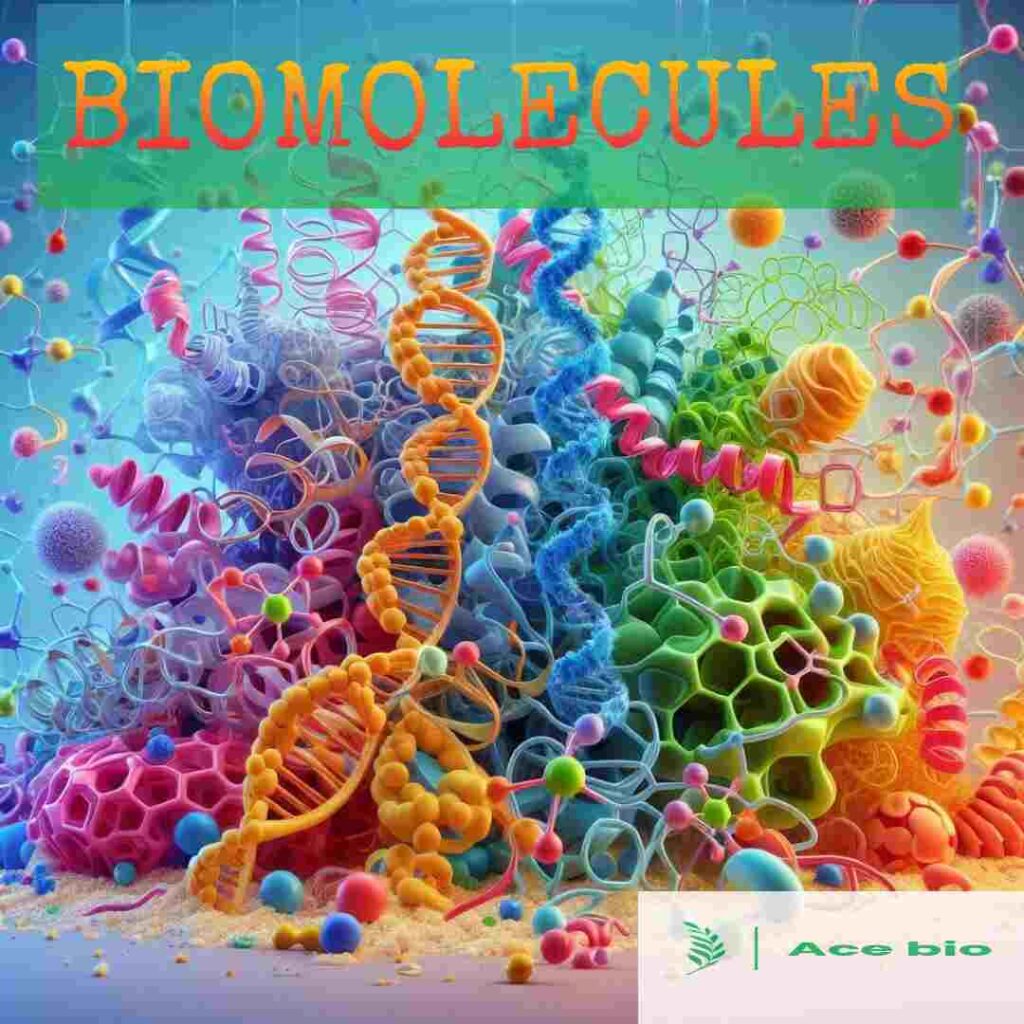
Biomolecules are essential organic compounds that make up living organisms.
These include carbohydrates, proteins, lipids, and nucleic acids, each playing a crucial role in maintaining life.
From providing energy to storing genetic information and regulating metabolism, biomolecules are at the heart of all biological functions.
Types of Biomolecules
Carbohydrates
The Primary Energy Source Carbohydrates are organic molecules composed of carbon, hydrogen, and oxygen, generally following the formula (CH₂O)n.
They serve as the primary energy source for most living beings and also contribute to structural and functional roles in cells.
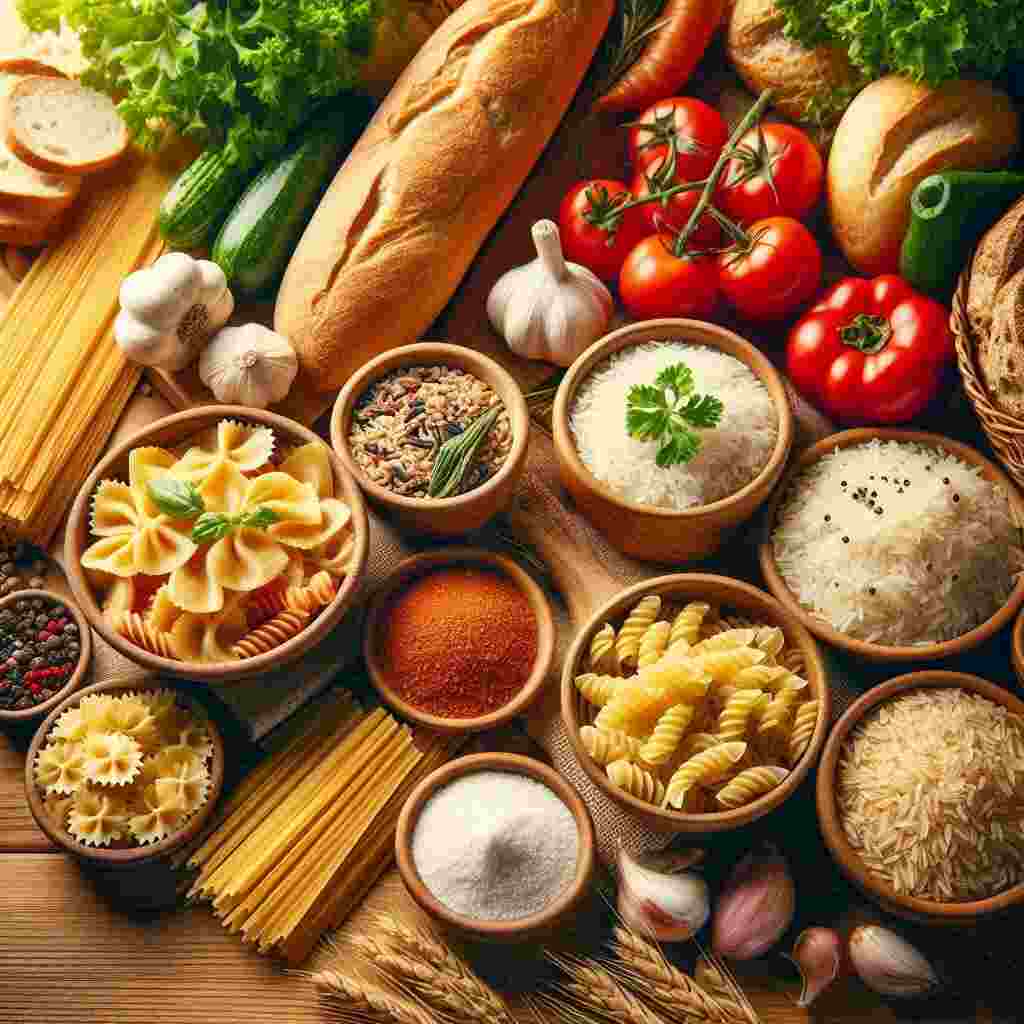
Classification of Carbohydrates
Monosaccharides (Simple Sugars):
The most basic form of carbohydrates that cannot be further broken down.
Glucose (C₆H₁₂O₆): The primary fuel for cellular respiration.
Fructose: A naturally occurring sugar in fruits, known for its sweetness.
Galactose: Found in milk as a component of lactose.
Disaccharides (Two Monosaccharides Linked by a Glycosidic Bond):
Formed by combining two monosaccharides through a condensation reaction.
Sucrose (Glucose + Fructose): Common table sugar.
Lactose (Glucose + Galactose): Present in milk.
Maltose (Glucose + Glucose): Found in germinating grains.
Polysaccharides (Complex Carbohydrates): Long chains of monosaccharides that serve as storage or structural molecules.
Starch: The primary energy reserve in plants (e.g., rice, potatoes).
Glycogen: The stored form of glucose in animals, mainly in the liver and muscles.
Cellulose: A key component of plant cell walls, providing strength and support.
Chitin: Found in the exoskeletons of arthropods and fungal cell walls.
Functions of Carbohydrates
Act as a primary energy source for cells.
Provide structural support in plants (cellulose) and arthropods (chitin).
Play a role in cell communication and immune function (glycoproteins)
Proteins – The Building Blocks of Life
Proteins are complex molecules made up of amino acids linked by peptide bonds.
They are vital for various biological processes, including structural support, enzymatic activity, and cellular communication.
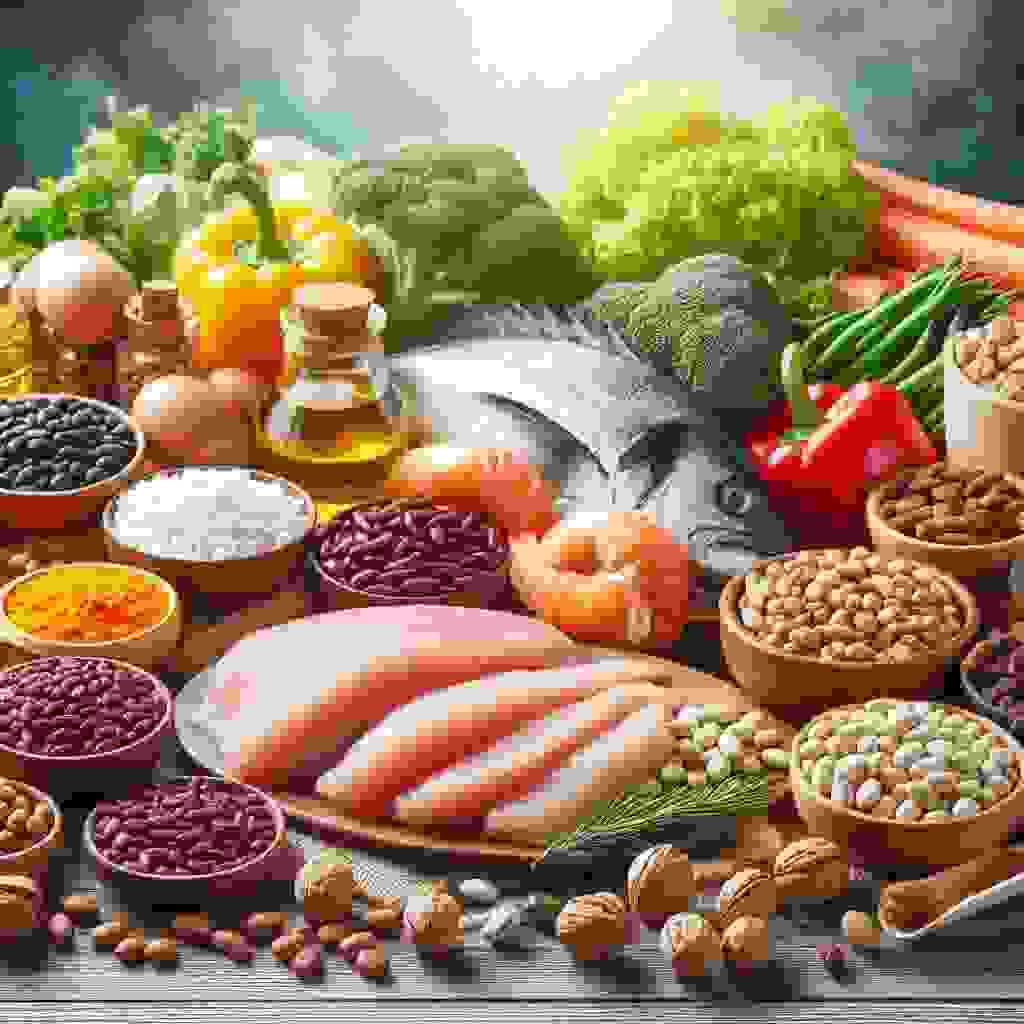
Structure of Proteins
Primary Structure: The sequence of amino acids in a polypeptide chain, determining the protein’s properties.
Secondary Structure: Includes α-helix and β-pleated sheet formations, stabilized by hydrogen bonds.
Tertiary Structure: The three-dimensional folding of the protein due to interactions among R-groups.
Quaternary Structure: The association of multiple polypeptide chains, as seen in hemoglobin and collagen.
Types of Proteins
Structural Proteins: Provide support (e.g., collagen in connective tissues, keratin in hair and nails).
Enzymes: Speed up biochemical reactions (e.g., amylase, DNA polymerase).
Transport Proteins: Carry essential molecules (e.g., hemoglobin transports oxygen).
Hormonal Proteins: Regulate physiological functions (e.g., insulin controls blood sugar).
Defensive Proteins: Act as antibodies to fight infections.
Functions of Proteins
Catalyze biochemical reactions as enzymes.
Provide mechanical strength to cells and tissues.
Facilitate cell communication and immune responses.
Regulate genetic expression and metabolic pathways.
Lipids
The Energy ReservoirsLipids are hydrophobic molecules composed mainly of carbon, hydrogen, and oxygen.
They are insoluble in water but dissolve in organic solvents like alcohol and ether.
Types of Lipids
Simple Lipids (Fats and Oils): Made of glycerol and fatty acids.
Fats are solid at room temperature (e.g., butter), whereas oils are liquid (e.g., olive oil).
Complex Lipids (Phospholipids, Glycolipids):
Phospholipids: Essential components of cell membranes (e.g., lecithin).
Glycolipids: Found in nerve cells, playing a role in cell recognition.
Steroids: Include cholesterol, testosterone, and estrogen, which are essential for various bodily functions.
Functions of Lipids
Serve as long-term energy storage molecules.
Provide insulation and cushioning.
Play a key role in cell membrane integrity.
Act as precursors for hormones and vitamins.
Nucleic Acids
The Genetic BlueprintNucleic acids are molecules that store and transmit genetic information, ensuring the continuity of life.
They are composed of nucleotide monomers.
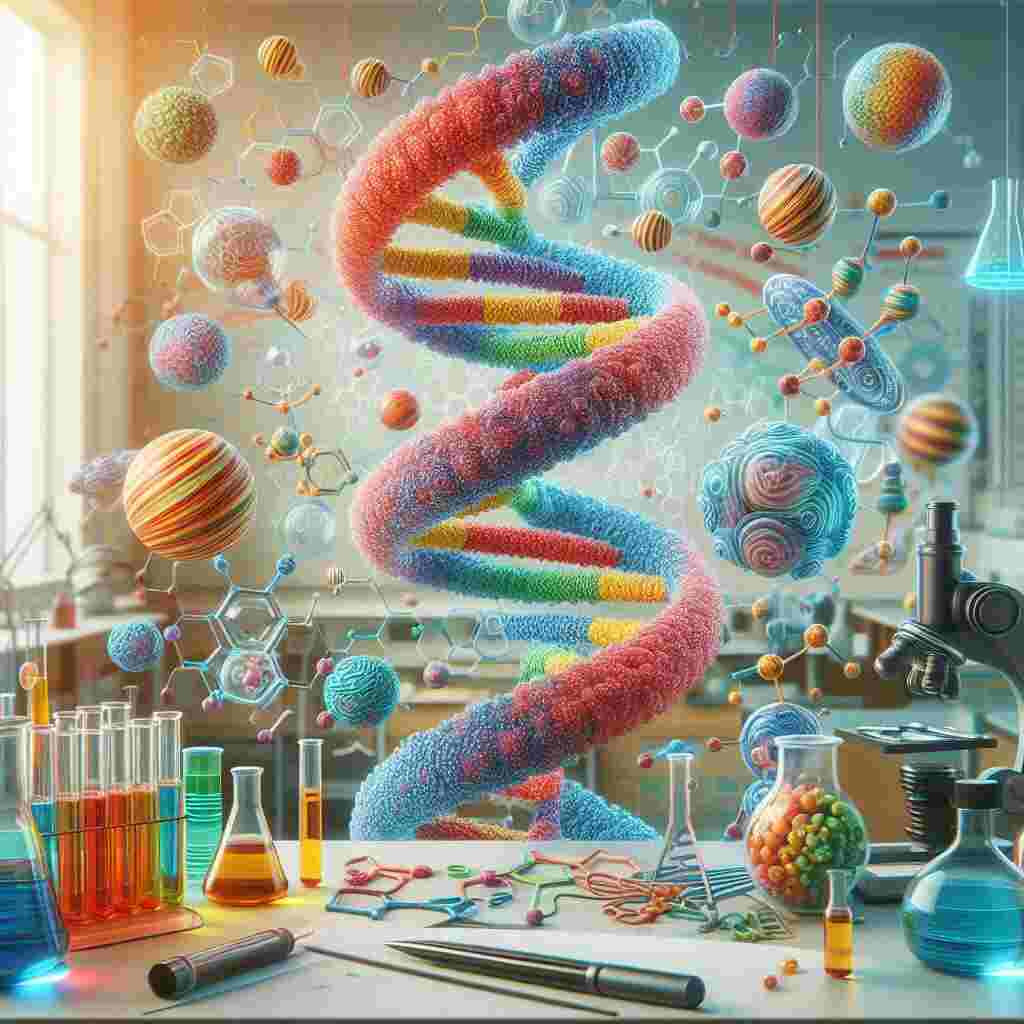
Types of Nucleic Acids
DNA (Deoxyribonucleic Acid):
Holds genetic information.
Has a double-helix structure discovered by Watson and Crick.
Contains nitrogenous bases: Adenine (A), Thymine (T), Guanine (G), Cytosine (C).
Base pairing: A-T, G-C.
RNA (Ribonucleic Acid):
Plays a crucial role in protein synthesis.
Single-stranded, with Uracil (U) replacing Thymine (T).
Types of RNA:
mRNA (Messenger RNA):
Transfers genetic instructions from DNA to ribosomes.
tRNA (Transfer RNA):
Brings amino acids to ribosomes for protein assembly.
rRNA (Ribosomal RNA): Forms a part of ribosomes, aiding in protein synthesis.
Functions of Nucleic Acids
DNA stores and transmits hereditary information.
RNA facilitates protein synthesis.
Regulate gene expression and cellular functions.
Enzymes
Nature’s CatalystsEnzymes are specialized proteins that accelerate chemical reactions by lowering activation energy.
Their function follows models like the Lock and Key Model and the Induced Fit Model.
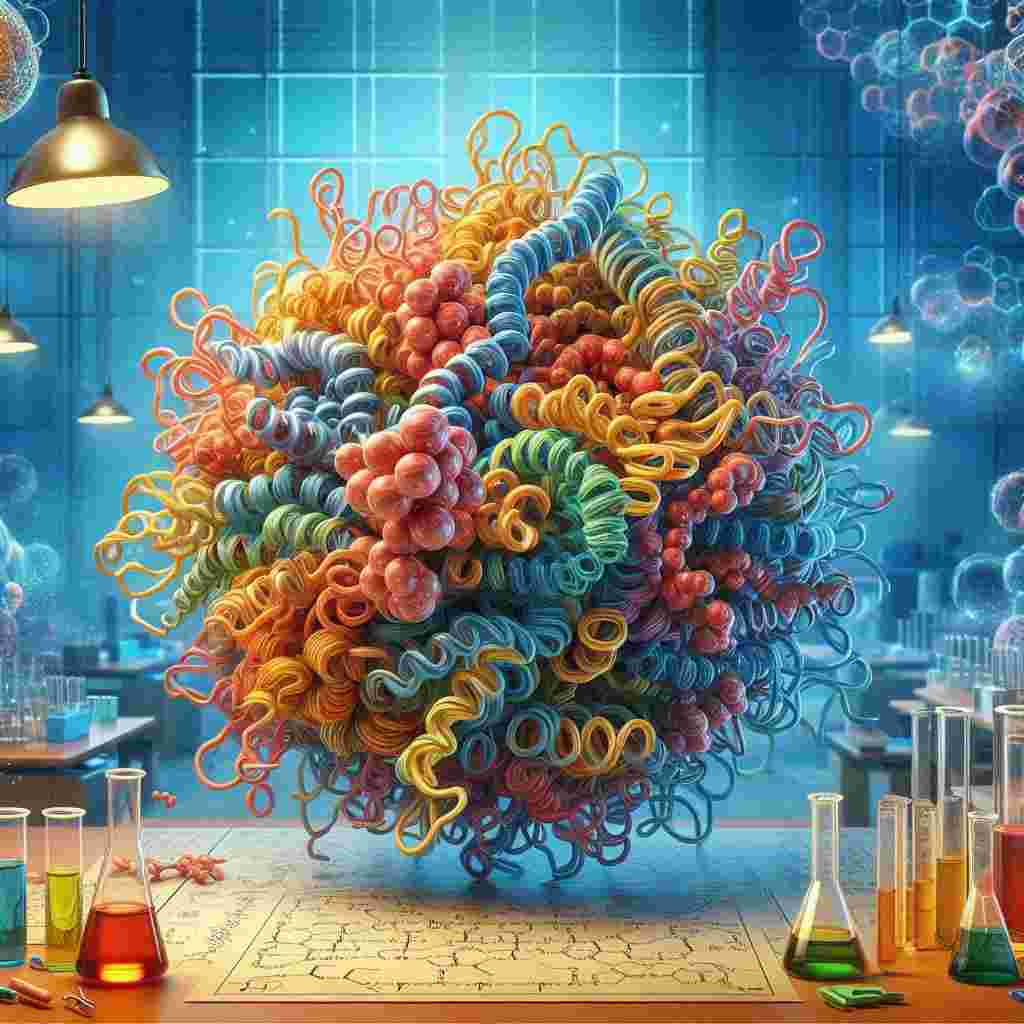
Factors Influencing Enzyme Activity
pH levels: Each enzyme functions best at a specific pH.
Temperature: Extreme temperatures can denature enzymes.
Substrate concentration: Higher substrate levels can increase reaction rates up to a limit.
Conclusion
Biomolecules are indispensable to life, forming the basis of energy production, genetic storage, structural integrity, and metabolism.
Their study is fundamental in fields such as genetics, biotechnology, and medicine, making them a crucial part of biological research.
“Need to revise the NEET Biology syllabus quickly? Visit our shop and get BioNotes – concise and effective revision notes for Biology!”
Frequently Asked Question (FAQ):
What are biomolecules?
Biomolecules are organic compounds essential for life, including carbohydrates, proteins, lipids, and nucleic acids. They play crucial roles in energy production, structural support, genetic information storage, and metabolic regulation.
What is the primary function of carbohydrates?
Carbohydrates serve as the primary energy source for living organisms. They are also involved in structural functions, such as forming plant cell walls (cellulose) and exoskeletons of arthropods (chitin).
How are proteins structured?
Proteins have four levels of structure:
Primary structure: Linear sequence of amino acids.
Secondary structure: α-helix and β-pleated sheets stabilized by hydrogen bonds.
Tertiary structure: Three-dimensional folding due to interactions among R-groups.
Quaternary structure: Interaction of multiple polypeptide chains.
What are the different types of lipids and their functions?
Lipids include:
Simple lipids (fats and oils): Long-term energy storage.
Complex lipids (phospholipids, glycolipids): Essential for cell membrane structure and function.
Steroids (cholesterol, hormones): Act as precursors for hormones and vitamins.
What is the role of nucleic acids in living organisms?
Nucleic acids, such as DNA and RNA, store and transmit genetic information. DNA carries hereditary information, while RNA plays a key role in protein synthesis.
How do enzymes function as biological catalysts?
Enzymes speed up biochemical reactions by lowering the activation energy required for the reaction. They function through models like the Lock and Key Model and the Induced Fit Model.
What factors affect enzyme activity?
Enzyme activity is influenced by factors such as:
pH: Each enzyme has an optimal pH range.
Temperature: High temperatures can denature enzymes, while low temperatures slow reactions.
Substrate concentration: Increased substrate levels can enhance enzyme activity up to a certain limit.
What are polysaccharides, and why are they important?
Polysaccharides are complex carbohydrates made of long chains of monosaccharides. They serve as energy storage molecules (e.g., starch in plants, glycogen in animals) and provide structural support (e.g., cellulose in plants, chitin in arthropods).
What is the difference between DNA and RNA?
DNA: Stores genetic information, has a double-helix structure, and contains the bases Adenine (A), Thymine (T), Guanine (G), and Cytosine (C).
RNA: Involved in protein synthesis, is single-stranded, and has Uracil (U) instead of Thymine (T).
Why are biomolecules important in biotechnology and medicine?
Biomolecules are fundamental in genetics, biotechnology, and medical research. Understanding them helps in drug development, disease diagnosis, genetic engineering, and the production of biopharmaceuticals
